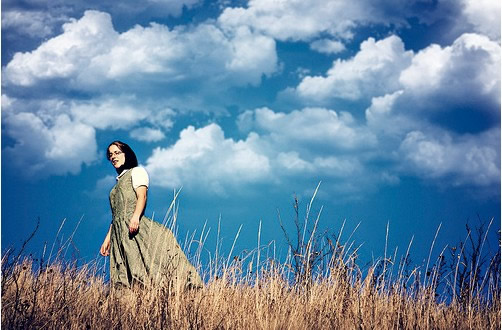UNIT 7: INDIVIDUAL AND COLLECTIVE RIGHTS
| Site: | MoodleHUB.ca 🍁 |
| Course: | Social 30-1 RVS |
| Book: | UNIT 7: INDIVIDUAL AND COLLECTIVE RIGHTS |
| Printed by: | Guest user |
| Date: | Saturday, 8 November 2025, 6:03 AM |
Table of contents
- 1. OVERVIEW
- 2. UNIT 7 CONCEPTS AND TERMS
- 3. Balancing Individual Rights
- 4. Legal Guarantees that Protect Rights
- 5. Collective & Individual Rights in Canada
- 6. Aboriginal Collective Rights in Canada
- 7. Protecting Minority Language Rights
- 8. Balancing Rights in a Pluralist Society
- 9. Individual Rights and Collective Security
- 10. Evaluating Illiberal Acts
- 11. Balancing Rights in Society
- 12. Dealing with Racism in a Pluralist Society
- 13. Resource Depletion and Environmental Issues
- 14. Poverty and Equality
- 15. Gender Issues and Equality
- 16. Dealing with Pandemics
- 17. Censorship in a Free Society
- 18. QUIZ 7.1: RIGHTS
- 19. UNIT SEVEN SUMMARY
1. OVERVIEW

These scenes sound like events from a horror movie, but in reality, they have occurred all around us in liberal democracies such as the Netherlands, the United States, Canada, and Mexico.
Throughout this course, you have looked at the values and principles associated with liberalism and collectivism. You have learned that as nations become more democratic and more multicultural, great challenges occur for liberal societies.
A balance between ensuring individual and collective freedoms is maintained in the face of threats to collective security and environmental degradation. In our multicultural and interconnected world, citizens and their representatives must find ways to balance the rights of minorities against the tyranny of the majority while ensuring peace, order, and security for everyone today and tomorrow.
Benjamin Franklin
Are you willing to give up any of your freedoms for the sake of security?
- How should individual rights be balanced with collective rights?
- To what extent should individual rights be infringed upon to ensure collective security in society?
This unit has two sections:
- My Rights Versus Yours
- Contemporary Issues
2. UNIT 7 CONCEPTS AND TERMS
Unit Question: To what extent should governments promote individual and collective rights to address contemporary issues?
Issue Question: To what extent are the principles of liberalism viable?
In this unit, you will explore the following big ideas based on questions arising from the issue question:
- What rights and freedoms are guaranteed to Canadians?
- How do we decide whose rights and freedoms are protected?
- What do we do when the rights of the minority are denied by the will of the majority?
- Should people give up some of their rights and freedoms so that everyone can be safe?
This is a list of new terms you will encounter in this unit.
Charter of Rights and Freedoms
civil rights
collective rights
economic rights
extraordinary rendition
Front de libération du Québec
inalienable rights
language rights
legal rights
minority rights
notwithstanding clause
political rights
Status and Non-status Indians
terrorism
Universal Declaration of Human Rights
treaty
War Measures Act
3. Balancing Individual Rights
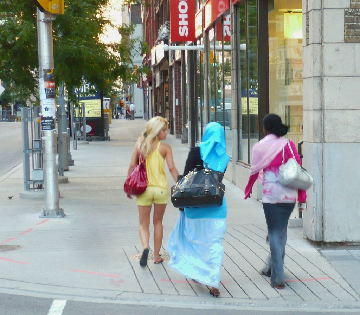
©Courtesy Mikey G Ottawa
to all human beings, and what rights are particular to Canadians?
As liberal democracies evolved, the role of government has increased to provide more than simple protection of individual rights to the protection of rights for groups of people, especially minority groups and groups who have traditionally faced discrimination. Groups of people may need their collective rights protected to experience the positive freedoms of modern liberalism.
The photo shows a group of women walking down the street in Ottawa.
- What rights and freedoms are experienced by these women?
- What rights do they enjoy in Canada that might be denied to them in other countries?
- What freedoms do they experience today that were not available to them fifty or a hundred years ago?
Today by law, Canadian women have rights equal to men, including voting rights, mobility rights, and freedom of expression, which includes the right to dress as they see fit. In some countries, a woman is not allowed to go out in public dressed in shorts and a sleeveless shirt. In others, the hijab might be outlawed. In some countries, a woman would not be allowed out of her house without the escort of a male relative.
During World War II, US President Franklin Roosevelt identified four freedoms: freedom of speech, freedom of religion, freedom from fear, and freedom from want. He believed there could be no lasting peace unless people all over the world were guaranteed these freedoms.
Although the first two of his freedoms are part of many constitutions traditionally, the second two demonstrate a move towards modern liberalism in which the government has a role to create positive freedoms that provide people with greater opportunities.
The Universal Declaration of Human Rights was written shortly after World War II as a response to the atrocities that were experienced leading up to and during the war. Drafted by Canadian John Humphreys, it was adopted in 1948 and outlines the fundamental rights that all human beings should have. Its principles are followed by nations around the world.
In this section, you will consider the fundamental rights that are guaranteed to individuals through law and custom. You will look at how liberal democracies deal with the need to balance individual and collective rights in a pluralistic society.
4. Legal Guarantees that Protect Rights
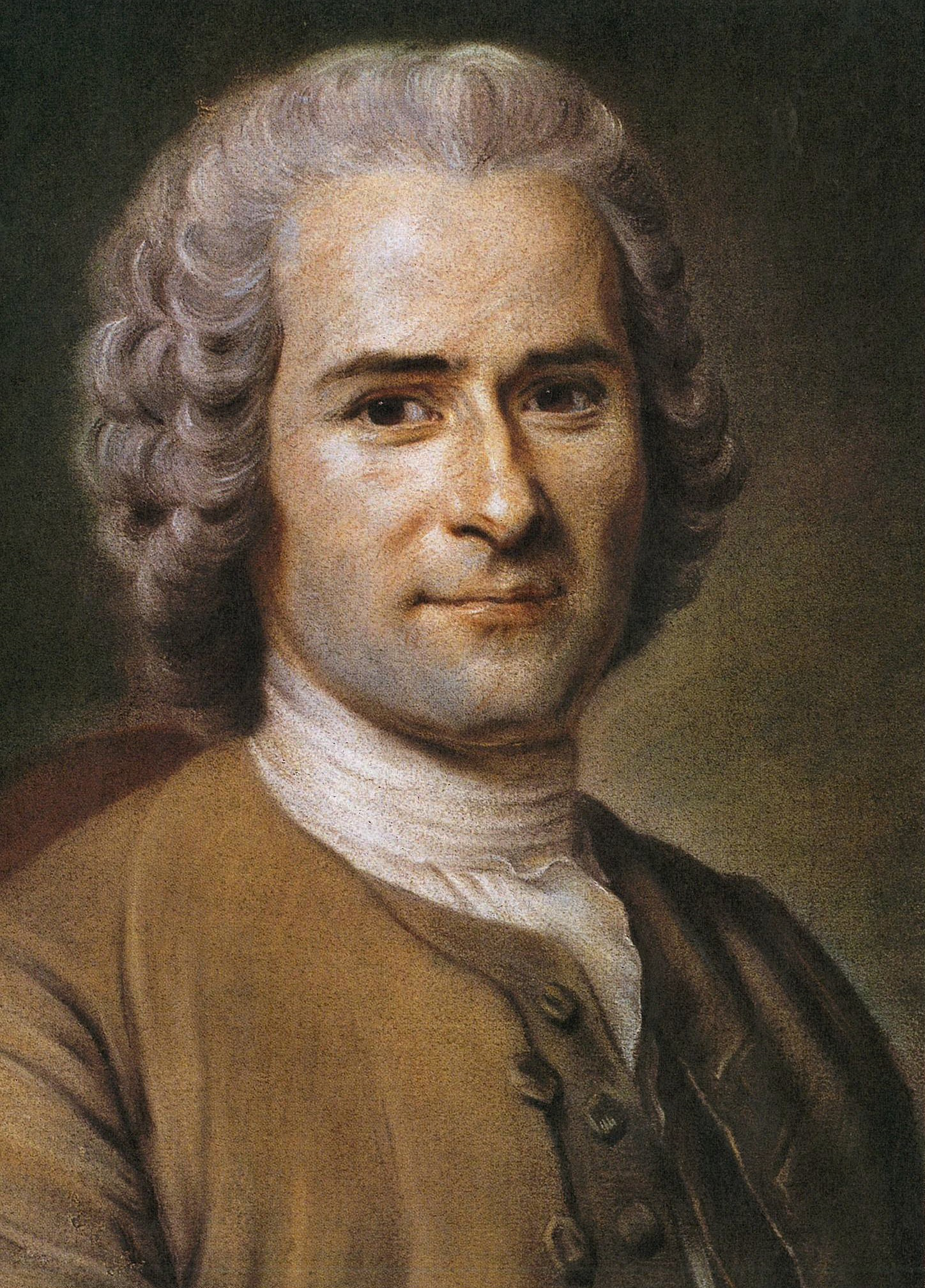
Jean Jacques Rousseau
Rousseau believed that by nature people are born free, but the repressive governments of his time limited their freedom. True and legitimate power could come only from the social contract agreed upon by all citizens for their safety and prosperity. In other words, people exchange some of their freedoms for the negative and positive liberties offered by their governments.
Rousseau's ideas shaped the modern liberalism we experience today. Over time, liberalism has evolved to award citizens many civil, political, legal, and economic rights and freedoms.
But what happens when the rights of one person interfere with the rights of another? Is it possible for the state to interfere with individual freedoms? According to the rule of law, the solution should be simple. One person cannot infringe on the rights of another. Unfortunately it is not that easy!
- Right of a woman to choose vs right of the unborn to life
- Right of a poor parent to raise a child vs right of a child to freedom from want
- Mobility rights for a woman whose culture calls for her to be escorted by a man wherever she goes
- Equality rights for a female student whose religion denies her schooling
- Freedom of the press when the government issues a publication ban to protect a witness
- Freedom of religion for a pacifist whose taxes support the military
- Freedom of expression for an artist whose views interfere with the religious beliefs of another
Many nations have bills of rights that outline the fundamental rights and freedoms to which their people are entitled. In fact, Australia is the only liberal democracy without a formal bill of rights.
The earliest known written laws come from ancient Babylon (modern Iraq) in the Code of Hammurabi from 1790 B.C. One of the earliest forms of a bill of rights comes from Britain in the form of the Magna Carta, or Great Charter of Liberty from 1215. The Magna Carta was one of the first examples of a written "rule of law" that outlined the rights of free men and limited the rights of the king. It is considered to be one of the first constitutions in the world.

Four years after it was written, the United States Bill of Rights was produced to identify the fundamental rights of citizens.
The Bill of Rights includes ten amendments (add-ons) to the U.S. Constitution:
- First Amendment ... freedom of speech, freedom of the press, and freedom of assembly
- Second Amendment ... right to bear arms
- Third Amendment ... protection from the quartering of troops
- Fourth Amendment ... protection from unreasonable search and seizure
- Fifth Amendment ... right to due process, protection from self-incrimination, right not to have private property taken for public use without compensation
- Sixth Amendment ... legal rights of the accused: right to a quick and public trial by jury, right to a lawyer
- Seventh Amendment ... civil rights including right to trial by jury
- Eighth Amendment ... limits to fines and bail, prohibits cruel and unusual punishment
- Ninth Amendment ... protection of undefined rights (the naming of some rights do not override others that are held by the people)
- Tenth Amendment ... power of States and people (Powers that are not defined are reserved for either the states or the people.)
- Which of the rights and freedoms granted to Americans under their Bill of Rights do you think matter? Could any of them be abolished?
- Would you consider the Bill of Rights a classical liberal or modern liberal document?
- To what extent is the Bill of Rights a reflection of negative freedoms or positive freedoms?
- How do these rights differ from Canadian rights and freedoms?
- When the freedoms of the majority interferes with the rights of the minority, how do we decide what to do?
5. Collective & Individual Rights in Canada
With the arrival of Canadian settlers, Canada first people's were joined by French, English, and others who created a mosaic of peoples.
In fact, many people came to Canada so they could experience the rights and freedoms that were denied to them in their home countries.
Please watch the following video explain Hutterites:
Example: The Hutterites
The photo you see on the page is by Hutterite photographer Kelly Hofer. The Hutterites are a protestant sect of the Christian Church whose beliefs include communal living and absolute pacifism. Hutterites do not participate
in military activities, wear a uniform, or pay war taxes. This led to their persecution and expulsion from many parts of Europe, and eventual migration to North America.
|
Although men and women are guaranteed equal rights under the Charter, men and women in Hutterite colonies have very different roles. Women cannot take leadership roles, and many colonies do not allow girls to complete high school. Because all property is owned communally, individual members of each colony do not own their own homes, vehicles, or land. Therefore, they do not pay individual income or property tax although Canada Revenue has a method for calculating taxes owed by each colony.
Hutterites in North America have a unique way of life based on their collectivist values. They do not own private property, they do not compete with each other economically, nor do they work in self-interest. They have their own schools and live according to their own rules, which focus on the good of their communities. In many ways, they do not believe in the values inherent in liberal democracies, yet they are valued members of Canadian society.
Protection from Tyranny of the Majority
The individual and collective rights that you and people such as Kelly Hofer and his friend-and all Canadians-enjoy are protected by the Canadian Charter of Rights and Freedoms that came into effect in 1982. A modern liberal document it extends protection for collective, as well as individual rights. This sets it apart from the American constitution, which does not recognize any collective rights.As part of the Constitution Act, it carries great weight because a constitution overrides all other legislation.

Section 27:
This Charter shall be interpreted in a manner
consistent with the preservation and enhancement of the multicultural
heritage of Canadians.
The rights and freedoms Canadians are guaranteed under law include the following:
freedom of religion
freedom of thought
freedom of belief
freedom of expression
freedom of the press
freedom of peaceful assembly
freedom of association
- right to life, liberty, and security of the person
- protection from unreasonable search and seizure
- freedom from arbitrary imprisonment
- right to legal counsel
- right to be presumed innocent until proven guilty
- protection from cruel and unusual punishment
The Charter also includes limitations and the notwithstanding clause that allows the federal and provincial governments to override temporarily certain sections of the Charter. This allows the will of the people to temporarily restrict rights (individual or collective) if elected governments feel it is justified. Otherwise, the constitution and the Charter of Rights cannot be easily changed or amended. This is to ensure that individual rights and minority protections under the law cannot be eliminated by any elected body.
- Which Charter rights do you think of as "fundamental rights"?
- Which rights seem designed to protect members of minorities?
- Are there circumstances in which a province might be justified in overriding any specific section or sections of the Charter?
6. Aboriginal Collective Rights in Canada
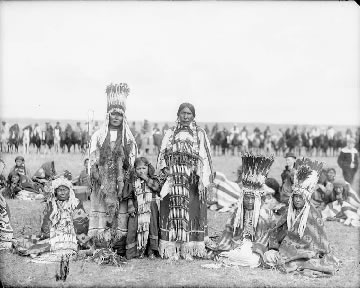
©Collections Canada
These rights included among other things health care, education, and freedom from paying federal taxes. Other terms of the treaties included denial of the right to vote for Aboriginal people unless they gave up their status.
Those who chose enfranchisement, or the right to vote, gave up their historic and legal treaty rights.
|
|
In effect, the first peoples of Canada entered in a gray area of Canadian citizenship with rights and freedoms different from other Canadians. They were members of their own Aboriginal nation, but they were also Canadians. This meant that Aboriginal Canadians;
- Could not vote on national issues, but they were subject to most of the laws of Canada.
- Were denied the political rights (suffrage) that would allow them to affect change in their country. The right to vote was granted in 1960.
- Did not pay taxes, but they obtained a certain degree of the services that were paid through tax dollars.

Creative Commons Share Alike 3.0
As a result, there has been historical debate over who are 'Indians' and what is 'Indian Land', as both of those areas fall strictly under federal control. This led to strict definitions of who the federal government considered Indian (a Status Indian) and who was not (a non-Status Indian). First Nations and Inuit live in many different provinces and territories. To make this even more challenging, Metis people were not considered Indian, and the federal government placed them with non-status Indians as 'not their responsibility'.
In 2016, a landmark ruling by the Supreme Court declared that regardless of status, all Indigenous people in Canada fall under the jurisdiction of the Federal Government. This will continue to have a tremendous impact on government budgets, services and institutions in the future.
- "When Government Action for the Perceived Common Good Outweighs Collective Rights" - pages 384 to 385
- "Efforts to Entrench First Nations, Métis and Inuit Rights" - page 386
- "The Canadian Government and the UN: Differing Perspectives on Collective Rights" - pages 387 to 389
- How do individual and collective rights differ?
- What are some of the collective rights protected in Canada?
- Under Canadian law, what happens when the collective rights of a cultural group are contrary to the laws of the nation? Who decides which are more important?
7. Protecting Minority Language Rights

Minority Language Rights
In practice, English and French are both taught to a certain extent in most schools, and some provincial services are available "where numbers warrant". Although French speakers are in the minority in most of Canada, in areas where a high concentration of people have French as their mother tongue, French language services may be provided. These collective rights are guaranteed under Section 23 of the Canadian Charter of Rights and Freedoms.
|
Language Rights in Quebec
The Province of Quebec has taken another approach. Keenly aware of its unusual position as a founding culture and a minority in its own country, the Province of Quebec took measures to preserve its language. Bill 22 was passed in 1974, the first language law in the province. It was expanded with Bill 101 in 1974. Other language laws that followed were designed to make French not only the official language but also the common language of Quebec.Language Laws in Quebec include:
- The right to government services in French.
- The right to speak French in deliberative assemblies.
- The right of workers to carry on their activities in French.
- The right of consumers to be informed and served in French.
- The right of all students to instruction in French.
These language laws have caused conflict. For example, all signs must be in French which has caused problems for business owners whose first language or commonly-used shop sign was English. More significantly, it has led to some concerns for parents. Under the legislation, the language of instruction for all students is French. Parents can choose to have their children taught in English only under the following conditions:
- if one parent is a Canadian citizen who attended elementary school in English in Canada
- if one parent is a Canadian citizen whose child has received or is receiving instruction in English somewhere in Canada (and the brothers and sisters of that child)
- if one parent received elementary instruction in English in Quebec
In other words, almost all children, including the children of immigrants to Quebec, must receive instruction in French. The only children who can go to school in English are children of English-educated Canadians or children who have attended English schools elsewhere in Canada or (until recently) in private schools in Quebec. As a result, enrollment in English schools has been declining steadily. Many English speakers have left the province.
|
- What legislation protects language rights in Canada?
- Are parents entitled to the freedom to choose their child's language of instruction?
- To what extent are the language rights issues in Quebec an example of the tyranny of the majority?
- Concerning language rights in Canada, to what extent do collective rights and the common good conflict?
8. Balancing Rights in a Pluralist Society
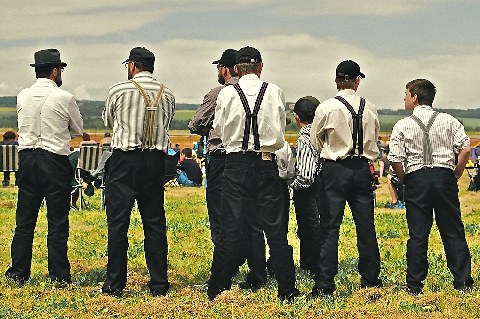
©Courtesy Bill Pope
Conflicting Rights
According to Section 27 of the Canadian Charter of Rights and Freedoms, Canada's multicultural heritage must be preserved.The unique nature of people from various cultures must be considered. For example, under Section 2, Hutterites- like all religious groups-have the right to practise their religion.
Example: Hutterites
In 2003, the Alberta government enacted a law requiring photographs on all driver's licences. When the law came into effect, approximately 300 members of several Hutterite colonies had drivers licences without photos.People in some Hutterite colonies believe that having their photograph taken violates one of the central rules of their religion. Their interpretation of the biblical second commandment "Thou shalt not make unto thee any graven image, or any likeness of any thing that is in heaven above, or that is in the earth beneath, or that is in the water under the earth" includes photography. Not all Hutterites share this belief, as you saw on page 7.1.3.
Soon after the law came into effect, a member of the Hutterian Brethren of Wilson Colony, east of Lethbridge, was stopped by police. His driver's licence did not have his photo on it, and he was fined for not having a valid driver's licence. The Wilson Hutterite colony took the government to court, and the Alberta Court of Queen's Bench struck down the regulation, ruling that the photo requirement violated the Charter of Rights and Freedoms.
The Alberta Court of Appeal upheld that finding in a 2-1 decision. The case then went to the Supreme Court of Canada where it was overruled in 2009.
|
Other Cases
There are other examples of conflicts between religious beliefs and government legislation. For example, in public, women in some Muslim sects cover their heads with a hijab (head scarf), or they cover themselves more fully with a niqab (a head covering that leaves only the eyes exposed), or cover themselves completely with a burka. In 2010, the provincial government of Quebec tabled Bill 94 that would ban the niqab-or any face covering-to people delivering or receiving public services in courts, hospitals, schools, and licensing bureaus.According to Premier Jean Charest
In 2019, the Quebec government went further, passing a law banning all religious symbols. Under Bill 21, public workers in positions of authority (including police officers, lawyers, and teachers) are not allowed to wear any religious symbols while at work, no matter the size. This bill, known as the "Act Respecting Laicity of the State", affirms that Quebec is a non-religious state, and that public employees are therefore not allowed to wear religious symbols, such as hijabs, burkas, or crosses. The Quebec government used the "Notwithstanding" clause in the Charter of Rights and Freedoms when creating this law. This means that it is not possible to challenge the law on the basis of it violating the Charter.
- What is more important, rule of law or freedom of religion?
- To what extent should equal treatment under the law take precedence over collective religious beliefs?
9. Individual Rights and Collective Security

© Courtesy Dan Paluska
The Case of Maher Arar
On September 26, 2002, a Canadian citizen returning from vacation was pulled out of the line going though customs at New York City's JFK airport. During the next three days, he was fingerprinted, photographed, strip-searched, interrogated, vaccinated, held in a jail cell, and denied access to a lawyer.During the next week, he met briefly with the Canadian consul and a lawyer. At three in the morning nine days after his intended flight, he was told that, based on secret classified information, he was being deported. He protested, was chained, put on a private jet, and flown to another country where he was blindfolded and beaten whenever he tried to move or talk. He was then put in a van and driven to the country of his birth.
Arar was tortured, repeatedly accused of having ties to terrorist organizations, and threatened with further punishment. He was held in a two metre long filthy sunless cell for the next ten months. After several meetings with the Canadian consul and more than a year later, he was forced to sign a document that he was not allowed to read and he was returned to Canada.
Maher Arar was born in Syria, but moved to Canada with his family as a teenager so he could avoid mandatory military service. A telecommunications engineer with dual Syrian-Canadian citizenship, he lived in Canada with his young family. At one time, he was considered to be a person of interest by the RCMP, and they provided this suspicion to the United States Immigration Service. Based on the RCMP information, he was sent back to Syria, rather than Canada, under the US policy of extraordinary rendition.
No link has ever been found between Arar and any terrorist group. After his release, a Canadian commission of inquiry investigated his situation and found no evidence to support any link to terrorism. The Canadian government apologized for its role in his deportation and awarded him over US$10 million in damages. In 2004, he began a lawsuit against the United States government, charging that the following rights were violated:
- His constitutional rights to due process
- His right to choose a country of removal guaranteed by the Torture Victims Protection Act
- Human rights under international law
|
Fear of extremist action such as terrorist attacks has led governments around the world to implement measures to protect their citizens. In the aftermath of September 11, 2001, and other terrorist attacks, many nations have limited personal freedoms and privacy rights for the common good.
George Radwanski, Canadian privacy commissioner, explained that Canadian anti-terrorism measures must meet a four-part test:
- The measure taken must be demonstrably necessary to meet a specific need.
- The measure must have a likeliness of being effective in achieving its intended purpose.
- Intrusions on privacy must be proportional to the security benefit to be derived.
- No other less-intrusive measure would achieve the same purpose.
|
Citizenship Case for Sons of Russian Spies:
10. Evaluating Illiberal Acts
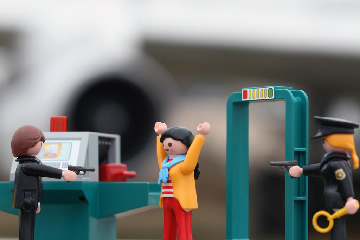
© Courtesy Jack Spades
How can we ensure that individual and collective rights are maintained in the face of the following challenges?
- religious rights vs equality rights
- individual rights vs rule of law
- individual freedoms vs collective security
- economic freedom today vs sustainability for the future
These are serious issues faced by all modern societies, and there are no easy answers. However, these questions lie at the heart of the issue for this section, which is:
- To what extent is modern liberalism a viable ideology to deal with contemporary issues?
- How do you, as a participant in a democratic society, decide when illiberalism is justified?
11. Balancing Rights in Society

What matters most: individual and collective rights and freedoms, or the common good?
This question is a key issue facing modern liberal democracies.
Today's globalizing world faces with many complex issues.
- Can economic freedom continue when the environment is being destroyed?
- What kind of economic freedom do people have if they live in absolute poverty?
- How do governments decide what is right and what is wrong when societies are composed of people with multiple perspectives?
- How can individual privacy be secured while terrorism is a threat?
- Can we allow freedom of the press when it might compromise the security of individuals?
- Should there be censorship to protect religious views from being offended?
- To what extent should individual/collective rights and freedoms be suspended during times of global pandemics?
Modern liberalism needs to evolve in order to deal with these daily concerns of people around the world. In this section, you will consider some contemporary challenges in liberal democracies, including environmental concerns, poverty (both
global and local), gender issues, multiculturalism, pandemics, terrorism, and censorship. You will look at how liberal
democracies try to find a balance between the protection of rights and
freedoms and the collective interest of society.
12. Dealing with Racism in a Pluralist Society

©Courtesy Far Away Pics, Flickr.com
We live in a world of people with many different beliefs and values. Although many people in liberal democracies may feel a woman who is protected completely from the view of everyone does not have the equal rights that are guaranteed to all people, regardless of gender, some Muslims believe that modest dress is a way of serving Allah. Others believe that women must be fully covered to protect them from unwelcome attention from men.
Dispute occurs within Muslim society regarding the use of the niqab and the burka. In fact, the Muslim Canadian Congress has called for a ban on this form of dress in Canada.
"To cover your face is to conceal your identity. The tradition of Muslim women covering their faces in public is a tradition rooted more in Middle Eastern culture than in the Islamic faith, and there is nothing in any of the primary Islamic religious texts, including the Qur'an, that requires women to cover their faces-not even in the controversial, ultra-conservative tenets of Sharia law. Considering the fact that women are in fact forbidden from wearing burkas in the grand mosque in Mecca, Islam's holiest site, it hardly makes sense that the practice should be permitted in Canada. If a government claims to uphold equality between men and women, there is no reason for them to support a practice that marginalizes women."
Racism and Racial Profiling
When we see things we do not understand, we often make judgements leading to stereotyping people of other cultures and races. Unfortunately, racism is too common in today's world-a world in which people of various races are far more interconnected than in the world of our ancestors. Ethic jokes, racial slurs, and racial profiling (such as a law enforcement person using race or ethnicity in deciding to question or arrest someone) happen so frequently that Americans have an acronym for it: "DWB" or "driving while black" is slang for the supposed "crime" of being black while driving. Police in some parts of Canada have been accused of racially targetting Aboriginal people.After September 11, 2001, the racial profiling of people from the Middle East in airport security has increased.

|
Consider the following stories from around the world:
Six imams removed from a US Airways flight from Minneapolis to Phoenix are calling on Muslims to boycott the airline. If only we could get Muslims to boycott all airlines, we could dispense with airport security altogether.
Ann Coulter, American commentator
Others believe that everyone in a liberal democracy has the right to equal treatment under the law regardless of circumstance.
Shirley Sarna, Quebec Human Rights Commission
- In a pluralist society, should all people enjoy equal rights, regardless if we hold different ideas about what those rights should be?
- How important is tolerance in a pluralist society?
13. Resource Depletion and Environmental Issues
- Whose rights matter more: the rights of the people of Fort Chipewyan to live according to their traditions or the economic freedom of large corporations such as Syncrude?
- Whose rights matter more: the rights of individuals to make as much money as possible today or the rights of generations still to come to live in a healthy environment?
- Is it possible to strike a balance?
|
|
|
|
|
|
|
14. Poverty and Equality

The photo shows a shantytown in front of an office tower in Mumbai, India, graphically illustrating how rich and poor co-exist in society.
Poverty means being unable to afford your own basic human needs. It means going without clean water, food, shelter, clothing, health care, and education.
Disparity Worldwide
More than 1.5 billion people in the world live in absolute poverty. That is about one quarter of the world's population. Before the Industrial Revolution, more than half of the world's people were extremely poor.There are many reasons poverty persists. Some claim a lack of economic freedom; others blame capitalism for providing greater opportunities for the rich to get richer while keeping the poor where they are. Corruption, lack of industrialization, political instability, few political institutions, and limited resources may also have roles in the continuation and/or expansion of poverty.
|
|
Look at the two maps below.
The one the right shows world poverty, and the one on the left shows economic freedom.Do you see any relationship between the two?
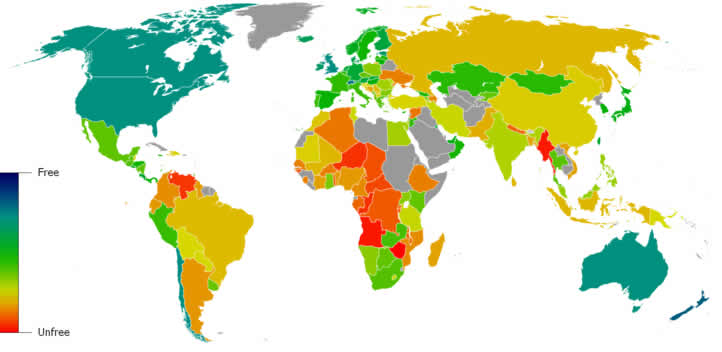
Produced with information from the Fraser Institute
Nations represented by the dark blue or green colour are free, while those shown in red are not free. Nations in grey do not have enough data to determine their degree of freedom.

Produced with information from the United Nations Human Development Index
In nations that are dark blue, less than 2% of the population lives in poverty as compared with nations that are dark red where over 60% of the people live in poverty.
Disparity in Liberal Democracies
Not only is there great disparity between nations, there is great inequality within nations. Even in a nation such as Canada, one child in nine lives below the poverty line. Homelessness continues to be a concern in many communities.Some people believe that with all the economic freedoms provided by a liberal democracy, there is no excuse for a person to be poor except his or her own poor choices. Others feel that, because people are born with various abilities and family circumstances and because not every individual has access to the same resources (financial, emotional, or educational), in no way can everyone advance at the same rate.
|
|
- Why are people poor? Can liberalism do anything to help them?
- Does liberalism contribute to economic prosperity for all, or to a growing gap between rich and poor?
- Should governments in liberal democracies protect people from extreme poverty?
15. Gender Issues and Equality
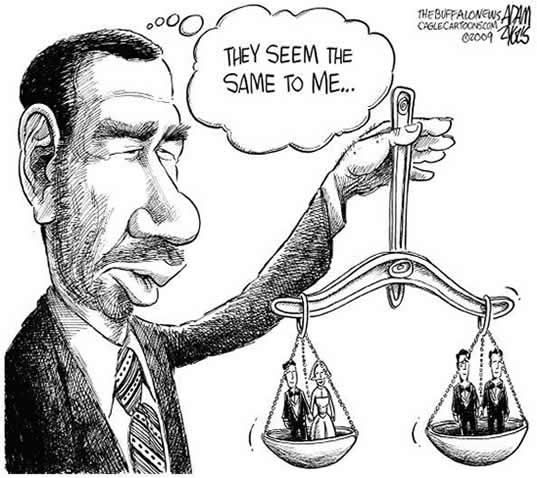
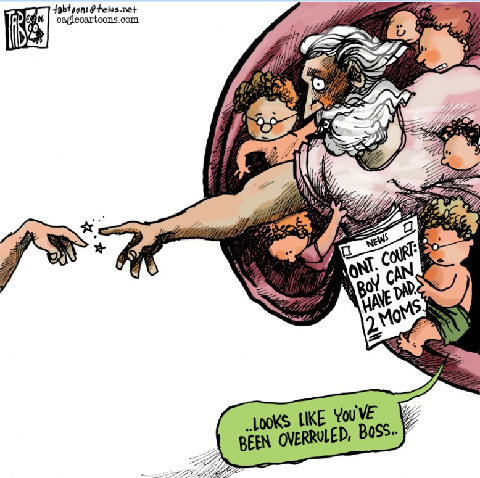
All Canadians are considered "equal" under the Constitution Act. They are entitled to equal treatment through the Charter of Rights and Freedoms. Rule of law, or equal treatment under the law is fundamental to a liberal society. However, the Charter does not define or specify the meaning of what equal treatment means. As a result, other laws have been enacted to ensure equality and protect those equality rights.
Example: Canada defines "marriage".
With the Civil Marriage Act of 2005, Canada became the fourth country in the world to define marriage formally in such a way that people of the same sex could legally marry. Other benefits previously available
only to marriages involving men and women, such as pension and health care benefits, have also been extended to same sex couples. Some people do not agree with this definition. Some people believe homosexuality is wrong.
In the United States, marriage is defined by the Defense of Marriage Act of 1996 as a "legal union exclusively between one man and one woman." Although a handful of states (which grant marriage licences) and one Aboriginal nation permit same sex marriage, the unions are not recognized by the federal government.
|
|
- What are the arguments for and against this particular extension of equality in Canada?
- Why are some liberal democracies explicitly enshrining same-sex marriage in their constitutions?
16. Dealing with Pandemics
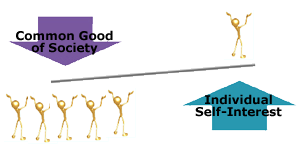

The photo shows a number of people praying in a church, many wearing surgical masks. These people are residents of Mexico City during the H1N1 or "swine flu" pandemic of 2009, which left over 14 000 dead around the world. Many people in Mexico were already infected with the virus before the seriousness of the outbreak was realized. Within days of the virus being recognized as a pandemic, Mexico City was effectively shut down. Some countries cancelled flights to Mexico while others halted trade, and still other recommended only essential travel for their citizens.
People leaving Mexico were screened for flu symptoms. In China, people returning from flu affected areas were quarantined, and other nations encouraged people with flu-like symptoms to stay in their homes.
WHO Organization: fighting Influenza Pandemics
- Should liberal democracies restrict individual freedoms to protect their own citizens?
- When is the common good more important than individual rights and freedoms?
17. Censorship in a Free Society
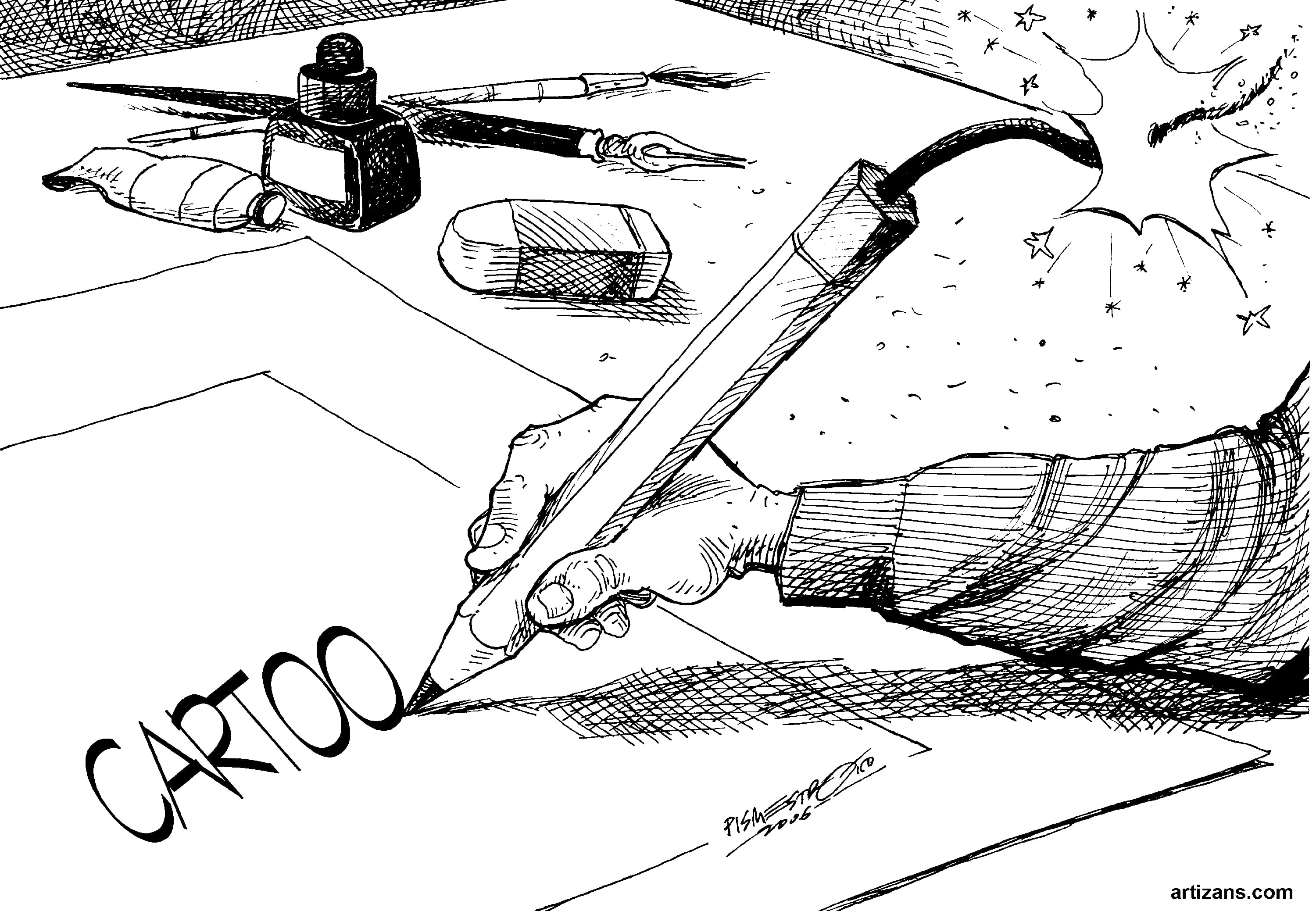
The cartoons incensed Muslims worldwide for several reasons. In some Muslim communities, any depiction of any prophet is forbidden; others consider an insult to the prophet is one of the most serious crimes that can be committed. One of the cartoons, featuring Mohammed wearing a turban shaped like the fuse to a bomb, was particularly offensive because it stereotyped all Muslims as terrorists.
Liberalism and Freedom of Expression
In western society, freedom of expression and freedom of the press are key individual and collective rights. Based on these fundamental human rights in a liberal democracy, publication of these cartoons should be allowed.Example: Freedom of the Press in Denmark
Denmark ranks number one on the Reporters without Borders Worldwide Press Freedom Index. Freedom of the press was guaranteed in law by the Danish Constitution in 1849, and upheld by the Constitutional Act of Denmark June 5, 1953. It has has been defended vigorously in Denmark for generations. Religious issues in particular have been portrayed in ways that many, including Christians and Jews, have found offensive.Is there a line between people's right to speak and the right of the press to publish on the one hand and the right to individual and collective freedom of religion and thought on the other? Is one more important than another?
Enlightenment philosopher Voltaire
Should there ever be limits to freedom of speech?
- Is it possible to have freedom of expression and freedom of the press without offending the collective rights of people with strong beliefs?
18. QUIZ 7.1: RIGHTS
1. Go to the unit tab to find the quiz
2. Do the quiz.
3. Be happy.
19. UNIT SEVEN SUMMARY
Unit Seven has explored:
- the viability of liberalism in the context of contemporary issues
- how people's rights are protected through law and custom, including the Canadian Charter of Rights and Freedoms and other legislation
- how conflicts arise between people with contending views of what their rights should be, including the conflicts that arise due to the various perspectives that exist in a pluralist nation such as Canada and in our interconnected world
- several challenges that are presented to liberal democracies in times of crisis through a focus on the issue question, Is it possible to follow the principles of liberalism in today's world?
Through this study and your analysis of political and economic systems in Unit Five and Unit Six, you should have formed some kind of position about the viability of liberalism in today's world.
| Individual and Collective Rights |
|
When you have finished reviewing your notes, complete the Unit Seven Review Quiz. When you have completed the multiple choice review, take a look at the feedback provided. If you so choose, after waiting 30 minutes, you may complete the quiz again, keeping in mind that the questions and the order of the possible answers are randomly generated. The second version of the review will be different from the first.
